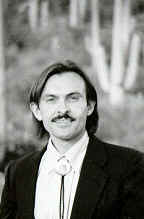I learned a bit about the politics of "Welcome to Country". In Australia, it is common to open events with a "Welcome to Country" address. In this procedure, an aboriginal person who comes from a group native to the land upon which one stands comes and welcomes delegates or attendees or members of an event to the land as one of the original people who inhibited that land. Typically the person chosen to offer the "Welcome to Country" tells of his or her ancestors who lived on that land and sings a song or two, speaking in the language of the land and then translating into English. Typically that person is paid to come and provide the "Welcome to Country". However, it's easy to imagine the political intrigues associated with this practice. Though an aboriginal person welcomes outsiders to his or her country, typically he or she owns none of the country. The symbolism of a disenfranchised person being paid to welcome outsiders to a country he or she no longer owns is not lost on we outsiders. It smells of co-opting.
We couldn't find a local to welcome me to country in Melbourne, so we chose not to use someone from a neighboring territory but rather to acknowledge the original holders of the land and to note that none of them were available to welcome me to country. Therefore, we acknowledged the original people of the land and their ancestors and wished that they could be present with us. Of course, two people from a neighboring aboriginal group were critical of the lack of "Welcome to Country" by an aboriginal person. We should have contracted with them. That didn't make sense to me, since they weren't from the land where we were speaking. Thus, politics emerge.
"Welcome to Country" aside, we heard important information.
Aboriginal people were first counted as citizens in the 1971 Census. Since then, censuses have shown a significant increase in people identifying as Aboriginal and/ or Torres Strait Islander peoples:
- Between the 1991 and 1996 Census there was a 33% increase recorded in the numbers of Indigenous peoples.
- Between the 1996 and 2001 Census there was a 16% increase.
- Between the 2001 and 2006 Census there was an 11% increase. [6]
Despite the increases in the numbers of people identifying as Indigenous in censuses, however, there are still believed to be significant undercounts occurring. In the 2006 Census, Indigenous status is unknown for 1,133,466 people, comprising 5.7% of the total number of people surveyed. [9]
2.1 Size and characteristics of the Indigenous population
In the 2006 Census, 455,028 people identified themselves as being of Aboriginal and/ or Torres Strait Islander origin, comprising 2.3% of the total population. [11]
There were approximately 409,729 people of Aboriginal origin (90% of the total) and 29,239 of Torres Strait Islander origin (6%). A further 19,552 people (4%) identified as of both Aboriginal and Torres Strait Islander origin. [12]
Table 1 below details the percentage of the total number of Indigenous peoples that lives in each State and Territory, and the proportion of each State and Territory's population that is Indigenous.
Table 1: Location of Indigenous peoples - by State and Territory (2006) [22]
Percentage of the total Indigenous population living in a State or Territory
Percentage of the State or Territory's total population that is Indigenous
New South Wales
28.7
2.2




